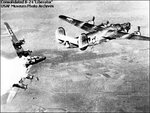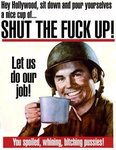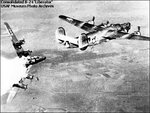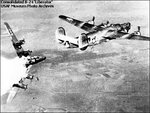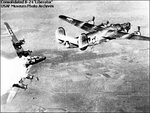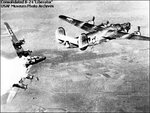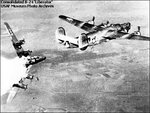- Thread starter
- #21
Navigation
Install the app
How to install the app on iOS
Follow along with the video below to see how to install our site as a web app on your home screen.
Note: This feature may not be available in some browsers.
More options
You are using an out of date browser. It may not display this or other websites correctly.
You should upgrade or use an alternative browser.
You should upgrade or use an alternative browser.
pearl harbor
- Thread starter NightHawk
- Start date
Ad: This forum contains affiliate links to products on Amazon and eBay. More information in Terms and rules
More options
Who Replied?- Thread starter
- #22
NightHawk
Senior Airman
lesofprimus
Brigadier General
what a retard....
the lancaster kicks ass
Major General
- 19,931
- Dec 20, 2003
can we stop this please............
- Thread starter
- #25
NightHawk
Senior Airman
the lancaster kicks ass
Major General
- 19,931
- Dec 20, 2003
please make an effort, both of you.....................
lesofprimus
Brigadier General
notice how the grammer improved??? he's an imposter man... dual poster or somethin...
- Thread starter
- #28
NightHawk
Senior Airman
lesofprimus
Brigadier General
all that is is a font type dude.. I could upload one for arabic if i wanted to and do the same thing.... Not impressive..
Tell me where the USO building is located in Haifa and ill belive what u say.....
Tell me where the USO building is located in Haifa and ill belive what u say.....
Lightning Guy
Master Sergeant
- 2,511
- Apr 29, 2004
OK so a few other fauls with the Pearl Harbor Movie . . . Spitfires are clearly armed with 20mm weapons which none of the Spits during the BoB were. All of the P-40 stuff has been mentioned. The shots of modern naval ships are Pearl Harbor are pretty hard to get over. Along with the fact that the shots of Nagumo's task force were all shots of a modern American CVBG. And finally, the B-25s in the movies are B-25Js rather than the B-25Bs used by Dolittle (this is best illustrated in the strafing run they make against the Japanese infantry).
lesofprimus
Brigadier General
George Welch and Pearl Harbor... The truth.....
At exactly 7:55 on a beautiful Sunday morning the United States was suddenly plunged into the greatest conflict in the history of the world. We were not only unprepared for war, but our armed forces in the Pacific were caught completely by surprise.
That same Sunday morning two young Army Air Corps lieutenants were just leaving an all-night party at Wheeler Field, Hawaii. They were George Welch and Ken Taylor of the 15th Pursuit Group. As they stood outside an army barracks watching the tropical dawn grow brighter, neither had any idea of the momentous event which was about to change their - lives. It was December 7, 1941. Welch was saying that instead of going to sleep, he wanted to drive back to their own base at nearby Haleiwa Field for a nice Sunday morning swim.
At that moment, just ten miles south of Lieutenants Welch and Taylor, carrier-based dive bombers, torpedo planes and fighters of the Imperial Japanese Navy were beginning their carefully planned sneak attack on the great American naval base at Pearl Harbor, as well as its surrounding airfields. Most of our powerful Pacific Fleet was in training, and there were ninety-six United States warships anchored in and about this Pacific stronghold. War had been expected by our military leaders, but the general opinion was that the Japanese would open hostilities against the Dutch or British possessions in Asia thousands of miles farther west.
As Welch and Taylor walked to their car to head back to their own base, they saw sixty-two new Curtiss P-40 "Tomahawks" parked wing tip to wing tip so they could be guarded "against sabotage."
Suddenly the Japanese swooped down on Wheeler Field, which was a center for fighter operations in Hawaii. Dive bombers seemed to appear out of nowhere. Violent explosions upended the parked planes, and buildings began to burn.
Welch ran for a telephone and called Haleiwa as bullets sprayed around him.
"Get two P-40s ready!" he yelled. "It's not a gag--the Japs are here."
The drive up to Haleiwa was a wild one. Japanese Zeros strafed Welch and Taylor three times. When the two fliers careened onto their field nine minutes later, their fighter planes were already armed and the propellers were turning over. Without waiting for orders they took off.
As they climbed for altitude they ran into twelve Japanese Val dive bombers over the Marine air base at Ewa. Welch and Taylor began their attack immediately. on their first pass, machine guns blazing, each shot down a bomber. As Taylor zoomed up and over in his Tomahawk he saw an enemy bomber heading out to sea. He gave his P-40 full throttle and roared after it. Again his aim was good and the Val broke up before his eyes. In the meantime Welch's plane had been hit and he dived into a protective cloud bank. The damage didn't seem too serious so he flew out again--only to find himself on the tail of another Val . With only one gun now working he nevertheless managed to send the bomber flaming into the sea.
Both pilots now vectored toward burning Wheeler Field for more ammunition and gas. Unfortunately the extra cartridge belts for the P-40s were in a hangar which was on fire. Two mechanics ran bravely into the dangerous inferno and returned with the ammunition.
The Japanese were just beginning a second strafing of the field as Welch and Taylor hauled their P-40s into the air again. They headed directly into the enemy planes, all guns firing. This time Ken Taylor was hit in the arm, and then a Val closed in behind him. Welch kicked his rudder and the Tomahawk whipped around and blasted the Val , though his own plane had been hit once more. Taylor had to land, but George Welch shot down still another bomber near Ewa before he returned.
Perhaps twenty American fighter planes managed to get into the air that morning--including five obsolete Republic P-35s. Most of them were shot down, but their bravery and initiative accounted for six victories in the one-sided aerial battle.
A second Version...
The party and poker game had been pretty much the norm. It had begun shortly after 21:00 hours and continued going strong until the sky began getting brighter along the eastern horizon. Welch and fellow pilot, Ken Taylor crawled into their beds at the Wheeler BOQ expecting to sleep in on a duty free Sunday morning. Just two hours into their party induced slumber, an unfamiliar rumble roused them to their feet. Running to the window, Welch was horrified to see smoke rising from burning aircraft on the field. Gazing up at a passing plane he noted the big red ball on the wings and fuselage. Japanese! Wheeler was being bombed by Japanese aircraft!
Leaping into the same clothes he had worn the previous evening, George raced from his room just as Taylor burst out of his door. Welch and Taylor had flown their P-40B fighters over to the small airfield at Haleiwa as part of a plan to disperse the squadrons planes away from Wheeler. George grabbed the telephone in the duty office and called Haleiwa. Getting the Duty sergeant on the line, he told him to see that both fighters were fueled, armed and warmed up. He and Taylor were on their way. Running at full tilt, the two pilots piled into Taylors car. Racing for the base gate, they were strafed by a passing dive bomber. Once on the road to Haleiwa, Taylor drove at breakneck speeds, frequently pushing 100 mph, and covered the winding 16 miles of road in little more than 15 minutes. Sliding to a stop in a cloud of dust and gravel, both men raced to their P-40s, now warmed up and ready. Jumping into the cockpit, Welch listened as his crew chief said, "Lieutenant, we dont have any .50 caliber ammo here. All that youre gonna have is the .30s." "Ok" said Welch, as he got his harness buckled. The crew chief continued, "We got word that we should disperse the planes, sir." "The hell with that", said Welch, "get off." The crew chief slid off the back of the wing and George pushed up the throttle and taxied to the narrow airstrip. Ignoring the usual pre-takeoff check-list, George slowly fed in full power and roared off the grass with Ken Taylor two minutes or so behind him.
Retracting his landing gear, Welch reached down and grabbed the charging handles for the wing mounted .30 caliber machine guns. Climbing past 1,000 feet, he spotted a large formation of aircraft heading towards the Marine airfield at Ewa. With the throttle jammed full forward, Welch raced in after the Japanese. Lining up on a dive-bomber, he opened fire from very close range. Despite having a gun jam, his fire was dead accurate. The single engine, elliptical winged bomber exploded into flame and nosed straight over into the ground. Pulling off to make another run, Welch felt his fighter take hits from another bombes rear gunner. Climbing away from the Japanese, Welch felt out the P-40 and determined that there was no damage of consequence. Rolling out into a dive, George headed back for the enemy formation. He arrived in time to see Taylor flame one of the meatball emblazoned dive bombers. Zooming in after another of the bombers (later to receive the Allied designation of Val) apparently headed back to its carrier, Welch again closed to point-blank range and sent the plane tumbling into the sea. Taylor had latched on to another of the Vals and sent him crashing into the ground just in from the beach near Barbers Point. Just as suddenly as it began, the sky was empty of enemy aircraft.
Not far from Wheeler, both pilots headed in and set down on the devastated airfield to replenish their nearly exhausted ammunition supply. Fortunately, one of the fields fuel trucks had survived the attack. Welch and Taylor remained in their cockpits gulping water provided by their ground crews. Both aircraft were fully fueled and armed, including the two .50 caliber guns mounted above the engine. The armorers were unable to clear Georges jammed wing gun. No matter, another formation of Japanese aircraft were spotted heading in. Welch waved the ground crew away and started the big Allison engine. As he turned onto the runway he eased up the throttle and roared down the field. Taylor rolled onto the runway and proceeded to take off in the opposite direction. As Welch cleared the ground, he pulled up his landing gear in time to see a Japanese fighter strafing Taylor on his takeoff roll. Meanwhile, yet another of the enemy fighters strafed Welch as his P-40 raced down the runway. Rolling into a hard left turn, Welch felt the landing gear lock into their wells and went straight for the fighter (an A6M2 Zero) that had attacked Taylor. Overhauling the radial engine plane, he opened fire. His rounds exploded the Zeros fuel tank and it crashed in a ball of fire just beyond the runway. Welch then spotted a lone dive bomber headed for the safety of its carrier and took out after him at full power. It didnt take long for the P-40 to close within range. Under a whithering rain of machine gun bullets, Welchs fourth victim crashed into the sea. Having used most of his ammunition supply, it was time to return to Wheeler in order to rearm and top off the fuel tanks. After George taxied in and cut his engine he discovered that Taylor had been wounded by the marauding Zero that had worked him over on his takeoff run. Taylor had ignored the rifle caliber machinegun bullet that passed through his arm and went directly for the enemy. Taylor had managed to hit several other Japanese aircraft, but had not been able to see any of them crash, he was too busy for that. All he could do was claim two probables. Likewise, Taylor has stated that at least two other Japanese aircraft fell to Welch. However, like Taylors probables, wreckage was never discovered out at sea. Once again, the two pilots refueled, rearmed and took off on a third sortie. However, by this time the Japanese carriers were already steaming away from Pearl Harbor. There would be no more encounters that day. Much to Taylors credit, he allowed only first aid to be performed on his wound before taking off for the third time.
For their actions on the morning of December 7th, both Welch and Taylor were awarded the Distinguished Service Cross. Later, Welch was honored by President Roosevelt at a special White House ceremony. Yet, this award was certainly less than what was deserved. Hap Arnold was prepared to approve a recommendation for the Medal of Honor for Welch. However, it was squashed by a local commander who argued that Welch and Taylor had taken off without orders. Such was the stupefying mindset of the pre-war Air Corps. Consider that the Japanese lost just 29 aircraft* during the attack (plus four other "operational" losses). Now stop and look at what Welch and Taylor had accomplished. At least 6, and probably 10 of the total Japanese losses were the direct result of these two pilots. How could the Army accept the no orders argument? What were these men supposed to do? Sit and wait for some staff officer to issue orders? Enemy aircraft were attacking, killing sailors, soldiers and airmen. There was no way that they would wait on the ground for the Japanese to discover their P-40s and destroy them sitting useless on the parking ramp. They were at war, and they were determined to make the Japanese pay a price for their treachery, and they intended to do so immediately.
At exactly 7:55 on a beautiful Sunday morning the United States was suddenly plunged into the greatest conflict in the history of the world. We were not only unprepared for war, but our armed forces in the Pacific were caught completely by surprise.
That same Sunday morning two young Army Air Corps lieutenants were just leaving an all-night party at Wheeler Field, Hawaii. They were George Welch and Ken Taylor of the 15th Pursuit Group. As they stood outside an army barracks watching the tropical dawn grow brighter, neither had any idea of the momentous event which was about to change their - lives. It was December 7, 1941. Welch was saying that instead of going to sleep, he wanted to drive back to their own base at nearby Haleiwa Field for a nice Sunday morning swim.
At that moment, just ten miles south of Lieutenants Welch and Taylor, carrier-based dive bombers, torpedo planes and fighters of the Imperial Japanese Navy were beginning their carefully planned sneak attack on the great American naval base at Pearl Harbor, as well as its surrounding airfields. Most of our powerful Pacific Fleet was in training, and there were ninety-six United States warships anchored in and about this Pacific stronghold. War had been expected by our military leaders, but the general opinion was that the Japanese would open hostilities against the Dutch or British possessions in Asia thousands of miles farther west.
As Welch and Taylor walked to their car to head back to their own base, they saw sixty-two new Curtiss P-40 "Tomahawks" parked wing tip to wing tip so they could be guarded "against sabotage."
Suddenly the Japanese swooped down on Wheeler Field, which was a center for fighter operations in Hawaii. Dive bombers seemed to appear out of nowhere. Violent explosions upended the parked planes, and buildings began to burn.
Welch ran for a telephone and called Haleiwa as bullets sprayed around him.
"Get two P-40s ready!" he yelled. "It's not a gag--the Japs are here."
The drive up to Haleiwa was a wild one. Japanese Zeros strafed Welch and Taylor three times. When the two fliers careened onto their field nine minutes later, their fighter planes were already armed and the propellers were turning over. Without waiting for orders they took off.
As they climbed for altitude they ran into twelve Japanese Val dive bombers over the Marine air base at Ewa. Welch and Taylor began their attack immediately. on their first pass, machine guns blazing, each shot down a bomber. As Taylor zoomed up and over in his Tomahawk he saw an enemy bomber heading out to sea. He gave his P-40 full throttle and roared after it. Again his aim was good and the Val broke up before his eyes. In the meantime Welch's plane had been hit and he dived into a protective cloud bank. The damage didn't seem too serious so he flew out again--only to find himself on the tail of another Val . With only one gun now working he nevertheless managed to send the bomber flaming into the sea.
Both pilots now vectored toward burning Wheeler Field for more ammunition and gas. Unfortunately the extra cartridge belts for the P-40s were in a hangar which was on fire. Two mechanics ran bravely into the dangerous inferno and returned with the ammunition.
The Japanese were just beginning a second strafing of the field as Welch and Taylor hauled their P-40s into the air again. They headed directly into the enemy planes, all guns firing. This time Ken Taylor was hit in the arm, and then a Val closed in behind him. Welch kicked his rudder and the Tomahawk whipped around and blasted the Val , though his own plane had been hit once more. Taylor had to land, but George Welch shot down still another bomber near Ewa before he returned.
Perhaps twenty American fighter planes managed to get into the air that morning--including five obsolete Republic P-35s. Most of them were shot down, but their bravery and initiative accounted for six victories in the one-sided aerial battle.
A second Version...
The party and poker game had been pretty much the norm. It had begun shortly after 21:00 hours and continued going strong until the sky began getting brighter along the eastern horizon. Welch and fellow pilot, Ken Taylor crawled into their beds at the Wheeler BOQ expecting to sleep in on a duty free Sunday morning. Just two hours into their party induced slumber, an unfamiliar rumble roused them to their feet. Running to the window, Welch was horrified to see smoke rising from burning aircraft on the field. Gazing up at a passing plane he noted the big red ball on the wings and fuselage. Japanese! Wheeler was being bombed by Japanese aircraft!
Leaping into the same clothes he had worn the previous evening, George raced from his room just as Taylor burst out of his door. Welch and Taylor had flown their P-40B fighters over to the small airfield at Haleiwa as part of a plan to disperse the squadrons planes away from Wheeler. George grabbed the telephone in the duty office and called Haleiwa. Getting the Duty sergeant on the line, he told him to see that both fighters were fueled, armed and warmed up. He and Taylor were on their way. Running at full tilt, the two pilots piled into Taylors car. Racing for the base gate, they were strafed by a passing dive bomber. Once on the road to Haleiwa, Taylor drove at breakneck speeds, frequently pushing 100 mph, and covered the winding 16 miles of road in little more than 15 minutes. Sliding to a stop in a cloud of dust and gravel, both men raced to their P-40s, now warmed up and ready. Jumping into the cockpit, Welch listened as his crew chief said, "Lieutenant, we dont have any .50 caliber ammo here. All that youre gonna have is the .30s." "Ok" said Welch, as he got his harness buckled. The crew chief continued, "We got word that we should disperse the planes, sir." "The hell with that", said Welch, "get off." The crew chief slid off the back of the wing and George pushed up the throttle and taxied to the narrow airstrip. Ignoring the usual pre-takeoff check-list, George slowly fed in full power and roared off the grass with Ken Taylor two minutes or so behind him.
Retracting his landing gear, Welch reached down and grabbed the charging handles for the wing mounted .30 caliber machine guns. Climbing past 1,000 feet, he spotted a large formation of aircraft heading towards the Marine airfield at Ewa. With the throttle jammed full forward, Welch raced in after the Japanese. Lining up on a dive-bomber, he opened fire from very close range. Despite having a gun jam, his fire was dead accurate. The single engine, elliptical winged bomber exploded into flame and nosed straight over into the ground. Pulling off to make another run, Welch felt his fighter take hits from another bombes rear gunner. Climbing away from the Japanese, Welch felt out the P-40 and determined that there was no damage of consequence. Rolling out into a dive, George headed back for the enemy formation. He arrived in time to see Taylor flame one of the meatball emblazoned dive bombers. Zooming in after another of the bombers (later to receive the Allied designation of Val) apparently headed back to its carrier, Welch again closed to point-blank range and sent the plane tumbling into the sea. Taylor had latched on to another of the Vals and sent him crashing into the ground just in from the beach near Barbers Point. Just as suddenly as it began, the sky was empty of enemy aircraft.
Not far from Wheeler, both pilots headed in and set down on the devastated airfield to replenish their nearly exhausted ammunition supply. Fortunately, one of the fields fuel trucks had survived the attack. Welch and Taylor remained in their cockpits gulping water provided by their ground crews. Both aircraft were fully fueled and armed, including the two .50 caliber guns mounted above the engine. The armorers were unable to clear Georges jammed wing gun. No matter, another formation of Japanese aircraft were spotted heading in. Welch waved the ground crew away and started the big Allison engine. As he turned onto the runway he eased up the throttle and roared down the field. Taylor rolled onto the runway and proceeded to take off in the opposite direction. As Welch cleared the ground, he pulled up his landing gear in time to see a Japanese fighter strafing Taylor on his takeoff roll. Meanwhile, yet another of the enemy fighters strafed Welch as his P-40 raced down the runway. Rolling into a hard left turn, Welch felt the landing gear lock into their wells and went straight for the fighter (an A6M2 Zero) that had attacked Taylor. Overhauling the radial engine plane, he opened fire. His rounds exploded the Zeros fuel tank and it crashed in a ball of fire just beyond the runway. Welch then spotted a lone dive bomber headed for the safety of its carrier and took out after him at full power. It didnt take long for the P-40 to close within range. Under a whithering rain of machine gun bullets, Welchs fourth victim crashed into the sea. Having used most of his ammunition supply, it was time to return to Wheeler in order to rearm and top off the fuel tanks. After George taxied in and cut his engine he discovered that Taylor had been wounded by the marauding Zero that had worked him over on his takeoff run. Taylor had ignored the rifle caliber machinegun bullet that passed through his arm and went directly for the enemy. Taylor had managed to hit several other Japanese aircraft, but had not been able to see any of them crash, he was too busy for that. All he could do was claim two probables. Likewise, Taylor has stated that at least two other Japanese aircraft fell to Welch. However, like Taylors probables, wreckage was never discovered out at sea. Once again, the two pilots refueled, rearmed and took off on a third sortie. However, by this time the Japanese carriers were already steaming away from Pearl Harbor. There would be no more encounters that day. Much to Taylors credit, he allowed only first aid to be performed on his wound before taking off for the third time.
For their actions on the morning of December 7th, both Welch and Taylor were awarded the Distinguished Service Cross. Later, Welch was honored by President Roosevelt at a special White House ceremony. Yet, this award was certainly less than what was deserved. Hap Arnold was prepared to approve a recommendation for the Medal of Honor for Welch. However, it was squashed by a local commander who argued that Welch and Taylor had taken off without orders. Such was the stupefying mindset of the pre-war Air Corps. Consider that the Japanese lost just 29 aircraft* during the attack (plus four other "operational" losses). Now stop and look at what Welch and Taylor had accomplished. At least 6, and probably 10 of the total Japanese losses were the direct result of these two pilots. How could the Army accept the no orders argument? What were these men supposed to do? Sit and wait for some staff officer to issue orders? Enemy aircraft were attacking, killing sailors, soldiers and airmen. There was no way that they would wait on the ground for the Japanese to discover their P-40s and destroy them sitting useless on the parking ramp. They were at war, and they were determined to make the Japanese pay a price for their treachery, and they intended to do so immediately.
- Thread starter
- #32
NightHawk
Senior Airman
GermansRGeniuses
Tech Sergeant
That's rather sad, I could find out the location if I tried via the internet.
- Thread starter
- #34
NightHawk
Senior Airman
GermansRGeniuses
Tech Sergeant
See, it kind of is.
You claim to live in Haifa, although you don't know where a most likely important building is.
If I wanted to, I'd find it in a matter of minutes on the internet.
You claim to live in Haifa, although you don't know where a most likely important building is.
If I wanted to, I'd find it in a matter of minutes on the internet.
the lancaster kicks ass
Major General
- 19,931
- Dec 20, 2003
i don't live anywhere near london but i could tell you where many buildings are.................
lesofprimus
Brigadier General
I was trying to get him to point out a certain geographical location... Haifa is a very nice city, and has a unique lay of the land so to speak... The USO building is located somewhere specific..... Not the street name, but topographically....
If he dont know this, he aint from there... PERIOD.....
If he dont know this, he aint from there... PERIOD.....
- Thread starter
- #38
NightHawk
Senior Airman
lesofprimus
Brigadier General
That made absoulutly zero sense..... What a moron.....
GermansRGeniuses
Tech Sergeant
Mississippi/New York (I'm confused at this point; please clear up where you live) is not a "SHITHOLE," you moron.
Users who are viewing this thread
Total: 1 (members: 0, guests: 1)

